SILHOUETTE(S) AND SHADE(S): A WORK OF EKPHRASIS AND ELLIPSES
Phil Sawdon
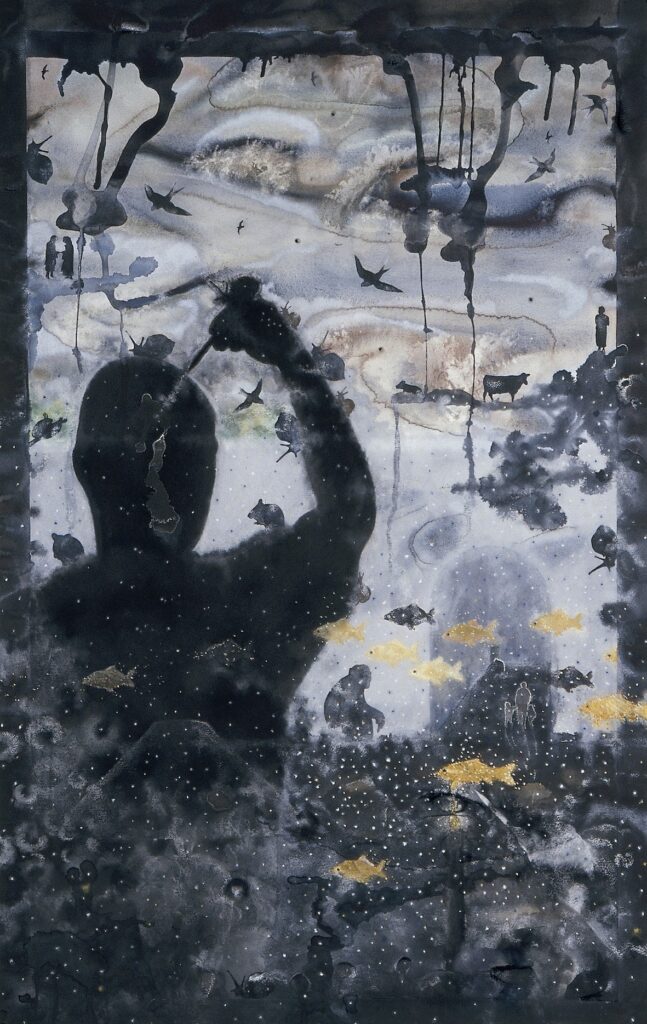
Competent at drawing … I used to chalk similarities on the shop door. Needless to say, I endeavoured to speak very quietly to the door, meanwhile the donkey stopped short, and would not move. In my head I have developed a discernment for profiles … previously tottering around a travelling fair … we noticed one more donkey shivering … he had eaten the leaded pencil yet managed to stammer that a profile-cutter wanted an assistant … thought I should do it … I had to tout … periodically mount the likeness on card …
‘Please step inside … have a likeness taken …’
Words, lines, and blots into a head, creatures … ‘à la [Etienne de] Silhouette’ … outline drawing … shadow portrait … drawn onto a substrate … silhouette … at a snail’s pace.
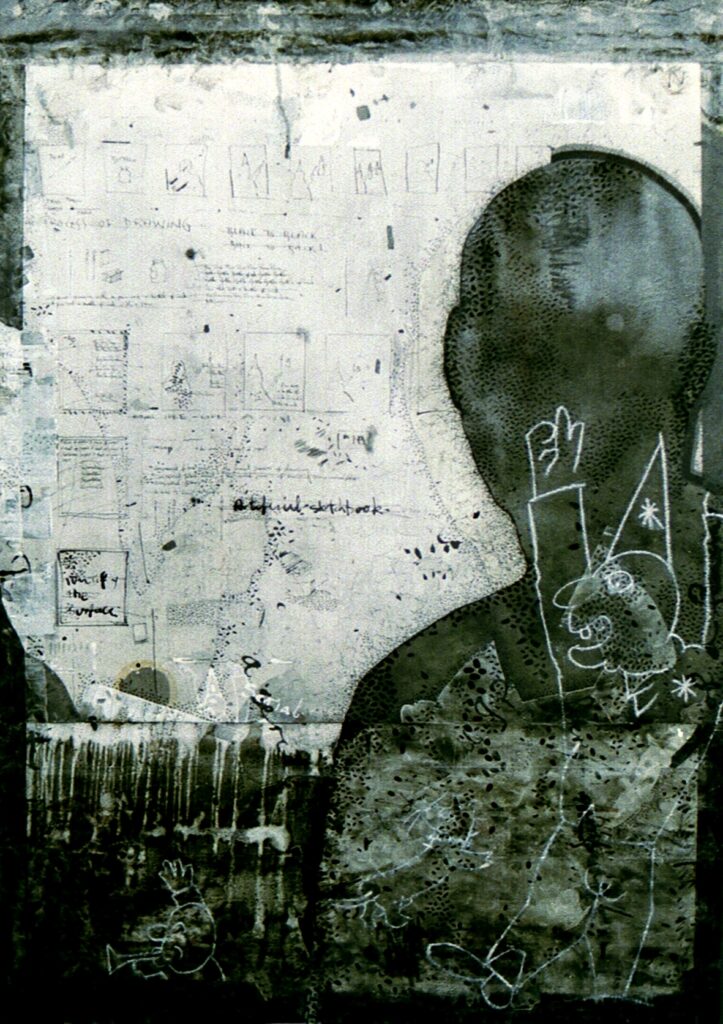
Three blind stamps … ‘Museum’, ‘The Fictional Museum of Drawing’ and ‘Artificial Sketchbook’… a label, a legend to identify the silhouette that at one time was probably drawn in ‘The Fictional Museum of Drawing’ … the former with a bugle player with out-stretched arm, the latter with a dachshund. Sometimes the stamps can be trusted, sometimes they cannot. Am I without drawing or machine? A physiognotrace … physiognomy … pantograph … physionotraces … alliterative … a wooden framed tripod contraption … shadow of the sitter … a lit candle against a screen … Lavater (1741-1801) … ‘Essays on Physiognomy, for the Promotion of the Knowledge and the love of Mankind’ … 1772 … possibly a person’s true personality is exposed in the subtle physical characteristics of their appearance … the silhouette divulges those qualities … a multi-layered narrative?
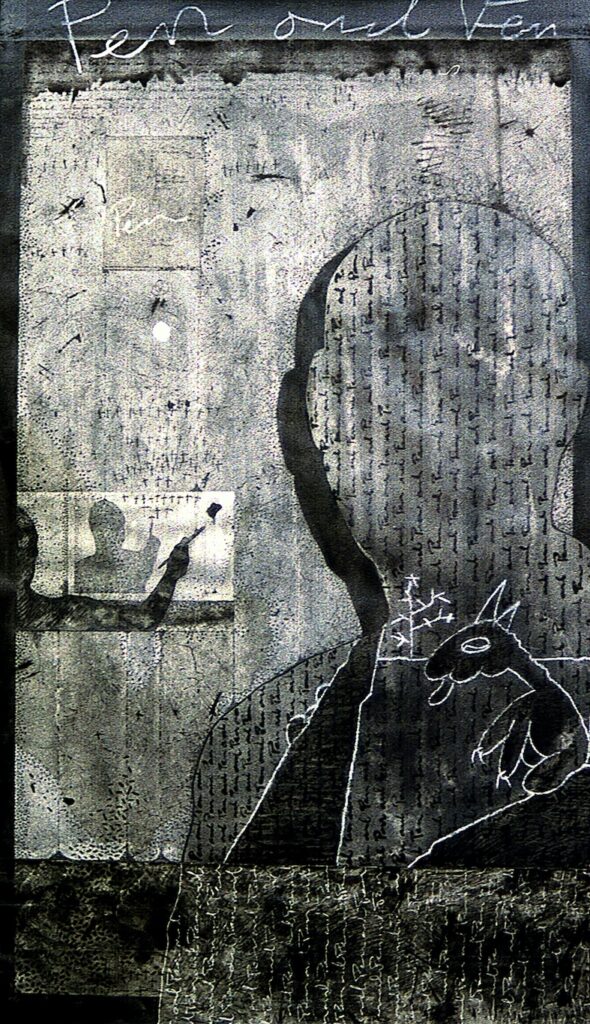
Customarily the Museum does not rely on labels and or stamps … perhaps the chance of a signature … perhaps a tell-tale sign that turns out to be intangible. There is a style …
A pen and a piece of discounted white paper inserted beneath. Long, thin, and at times dangling from a ‘commonplace book’ … momentarily a scrapbook of signatures, soon to be analysed.
The Museum Keeper archived a signature collar, both cut and then drawn. A small notch in the bust.
Perhaps with the sitter … a defective contrivance …
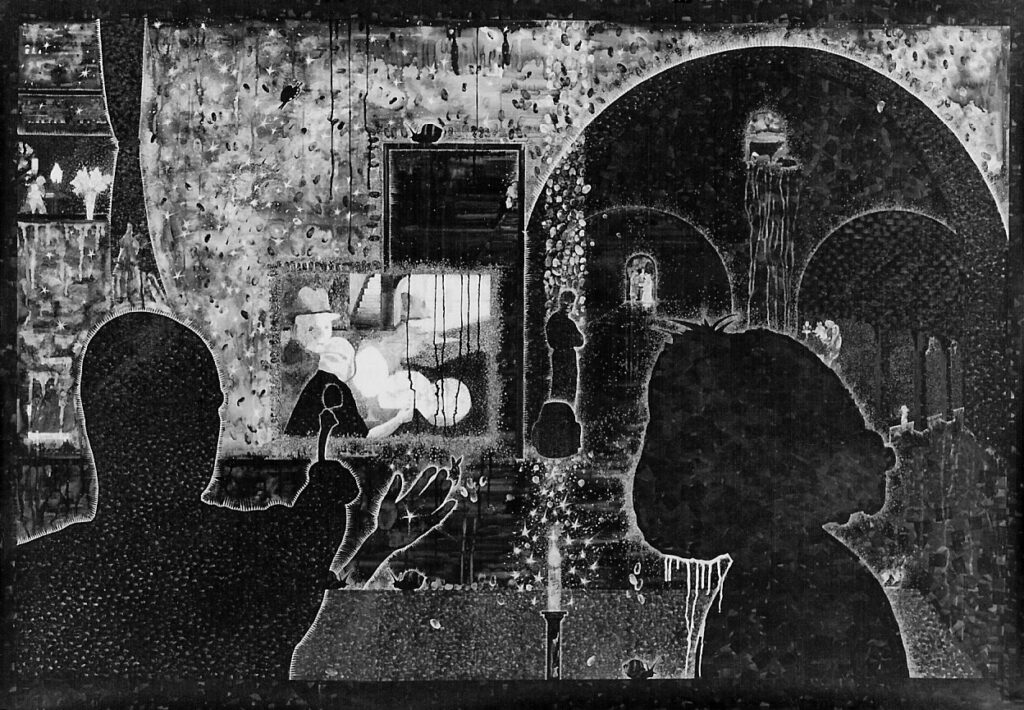
… occasional brush strokes on display, a black colorant coating, thick, matte, opaque often water dry … bone black, sitting on a thin black surface, variation from silhouette to silhouette, pigment and binder, silica, wax and gum … watercolours?
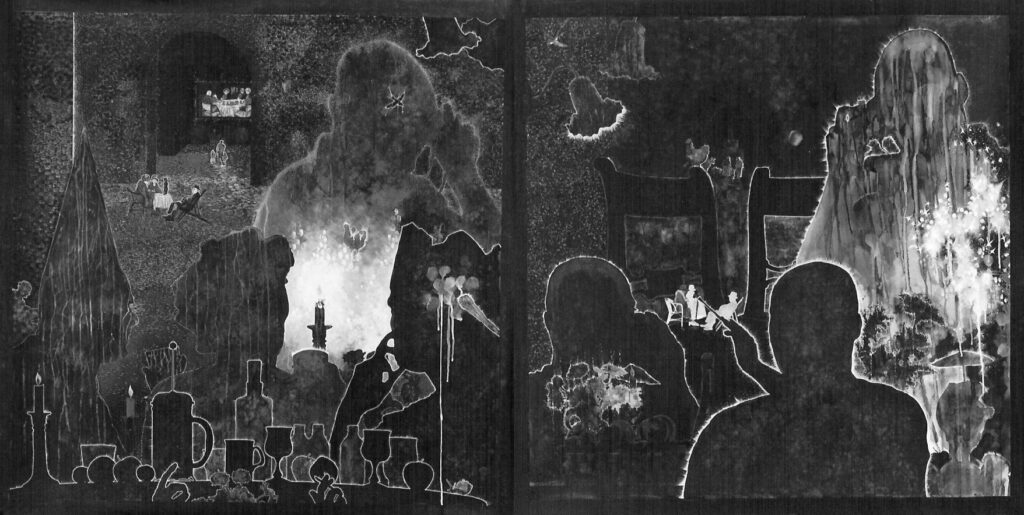
… India ink, pine soot, beer and tallow smoke … lamp black, dry watercolour, moist pan watercolour, carbon black, gall-nuts, white wine vinegar, iron filings, gum arabic … gouache for details ornamented with whites ‘bronzed’ or ‘touched’ … probably not …
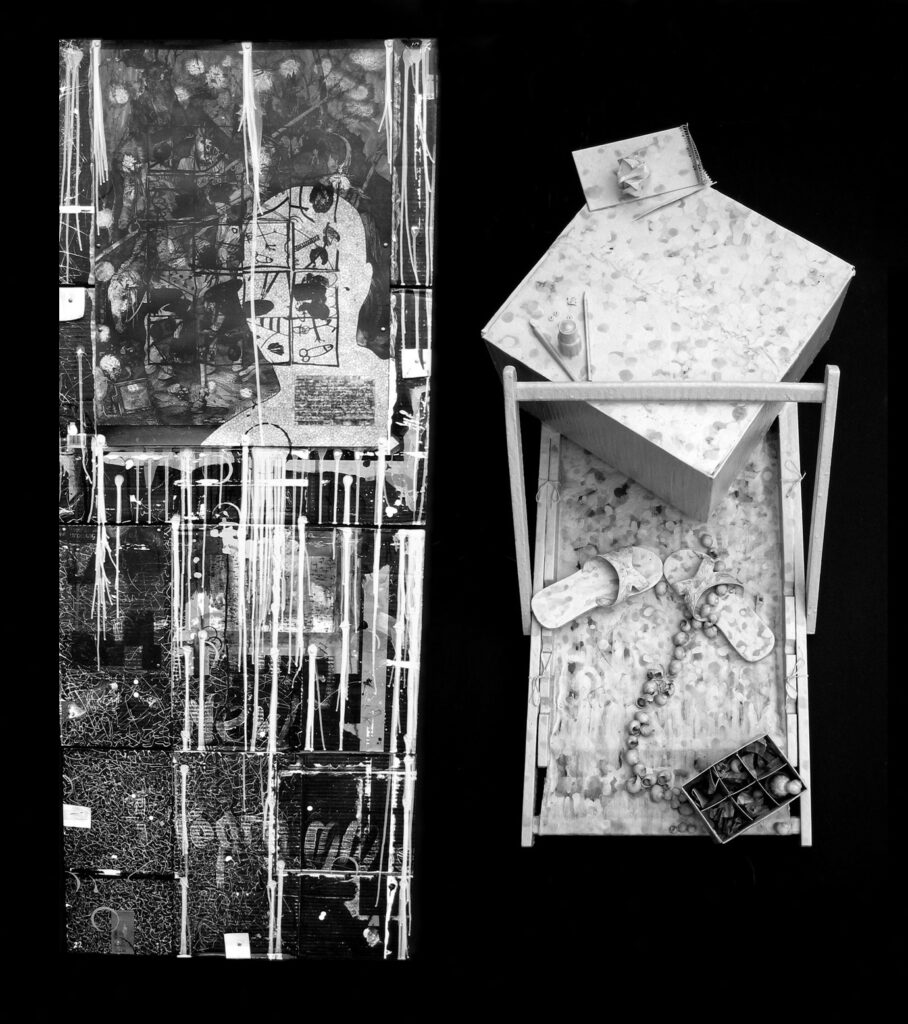
Image courtesy of the artist.
‘Did you ever practice with scissors on the cut-out of a deckchair?’
‘I cut all kinds of things including sealing a head in the box.’
Aside: ‘Only long straight shanks with short, sharp points, slack on the hinge … embroidery types are a partiality, they provide a flexible dexterity that transforms varied directions for an easy does it persuasion … ‘
In combination … a knife, a stiletto, a bradawl, a stylus and a needle spike … a side of the dry thin oiled paper the drawing is cut from, the edge is curled, trodden and tattered … In the background a simulated Albrecht Dürer’s head, engraving ‘Knight Death and the Devil’, 1513.
‘Scissor-types’ … ‘hollow cut’ with a painted body … cut from a light paper, the middle, the positive, the furthest place from fixed points of view … falls away …leaving the negative, the outside … backed by melancholic paper and desolate fabrics drawn into a space of theory and practice, in between the mind and the hand.
Shadows play … sunlight scraping on a photosensitive surface made to fool whilst tracing shadows.
A hand drawn shade … a paper-cut silhouette … querying … ‘What shall I draw?’
‘I don’t know how to draw!’
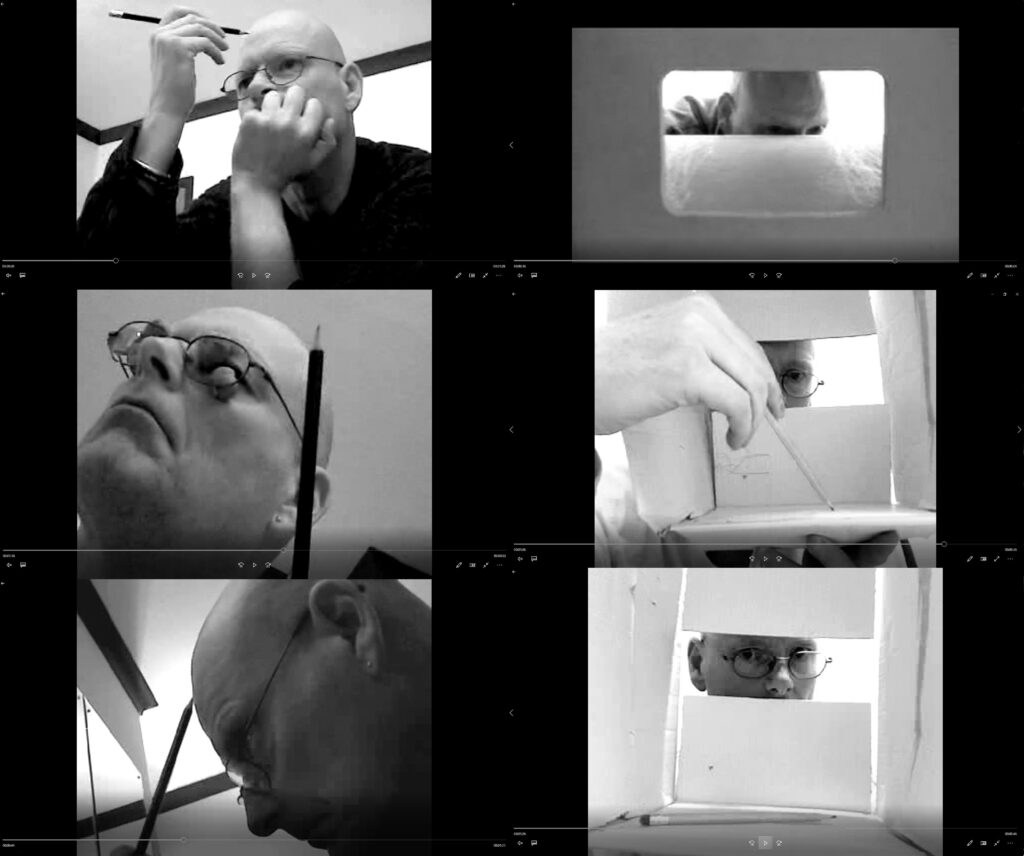
A humdrum shadow show(s) … a stylus tracing the silhouette … that of a younger self mostly devoid of interest … an apology of allegorical shades.
‘Use a cardboard box and a pencil.’
‘No doubt (a)A (s)Sure and (c)Convenient (m)Machine for (d)Drawing (d)Silhouettes’ …
Half veiled by a cardboard box, the right-handed draughter, engrossed, clutches the sharp blacklead pencil which holds the box firm to an unseen chair and a candle on an elaborate carved stand offers a trace of poise to the Museum … no head dress for sitting … decorated in whatever manner …
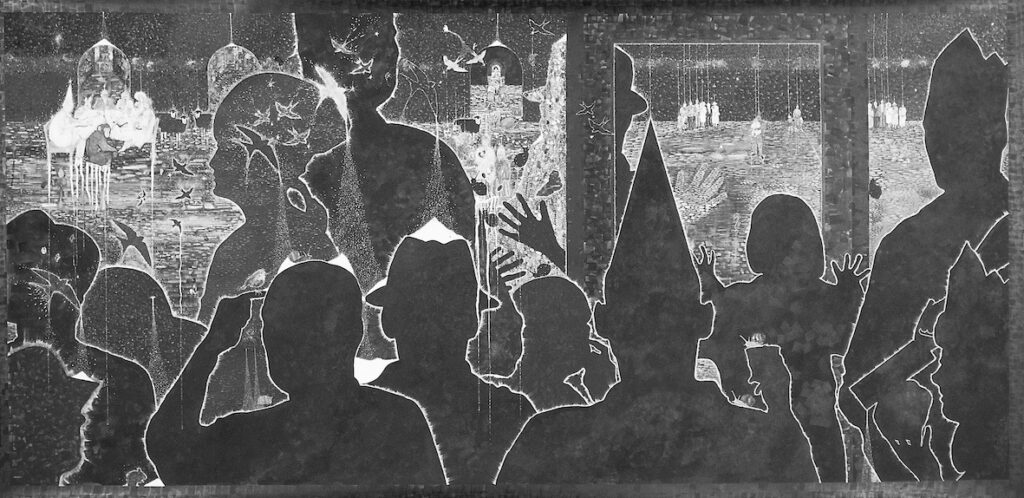
Meeting many people but not being touched by anyone …
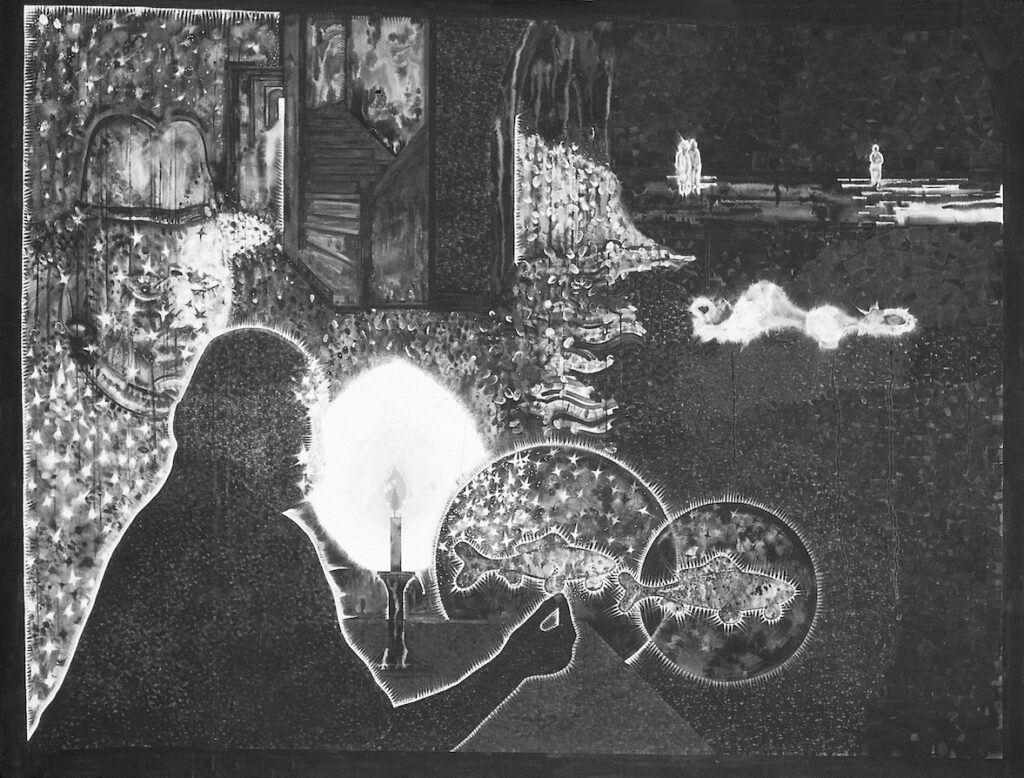
The narrative takes place around and yet is distanced from the silhouetted foreground figure. A pull between a highly controlled visual response and an openness of interpretation invited by the absence of meaningful titles is perhaps pivotal to the dynamics of any narrative.
Twisted from the inside out … tones and contrasts determined in black and white. The silhouette emerges indifferent to the paper … perched, devoid of details … whilst on the others hand … ahead … an intimate atmosphere.
However, there are oversights …
A poverty of silhouette …
DRAWING RESEARCH NETWORK
hosted by TRACEY at Loughborough University